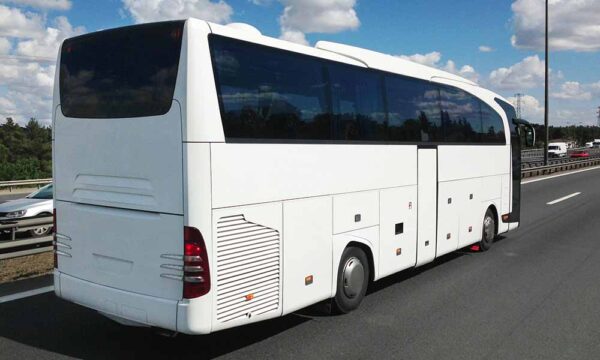
A terrible situation unfolded on I-40 in Tennessee last week, when a bus carrying a church group entered oncoming traffic and collided with an SUV and a tractor-trailer, sending smoke and flames into the air.
In all, 8 people were killed in the inferno – the truck driver, a passenger in the SUV and six parishioners on board the bus, whose ages ranged from 62 to 95. At least another dozen people were injured, some of them critically, CNN reported.
The Oct. 2 accident is still under investigation, but it appears a tire blowout caused the bus to cross the median into oncoming traffic. It highlights the fact that accidents occur anytime, anywhere and to anyone – but there are ways you can be prepared.
What Happened
After an annual gospel event in Gatlinburg, Tenn., 17 members of a Baptist church boarded a bus to head home to Statesville, N.C., about 45 minutes north of Charlotte. While en route, the driver’s side front tire of the bus blew out, sending the eastbound vehicle into the westbound lanes, where it clipped the SUV before striking the tractor-trailer. The truck burst into flames.
The flames left many bodies difficult to identify, and smoke filled the sky for hours. A 17-year veteran of the state’s highway patrol called the crash “horrific” and said it was the worst he had seen in his career.
The bus was owned by the church and driven by one of its members, meaning there is no bus company that may be potentially liable for the carnage.
Haven’t Experienced a Tire Blowout? Know These Facts
We don’t know what the driver of the bus did or didn’t do in the brief seconds he or she had to react. But tire blowouts are common enough that every driver should know what to do if they find themselves in such a situation. As the Tennessee incident makes clear, it could save lives.
The retailer National Tire & Battery, or NTB, offers a useful resource on tire blowouts. Importantly, it includes a description of what a blowout feels like, which is particularly informative for drivers who have never experienced one.
According to NTB, the vehicle will suddenly start to slow down and will pull strongly to the left or right, depending on which tire has blown. You should steer in the opposite direction to maintain a forward trajectory.
It is important to get off the road or highway as soon as possible, but without swerving into other lanes or creating a hazard for other drivers. It may take time to get a feel for how to properly guide the vehicle where you want it to go.
According to the National Safety Council:
- Grip the wheel firmly at the first sign of tire trouble.
- DO NOT slam on the brakes – to slow down, take your foot off the accelerator. (NTB recommends maintaining your speed or even increasing it, however.)
- Make your way to an exit or to the side of the highway cautiously, signaling all lane changes.
Blowouts are caused by low air pressure in a tire. When pressures drops too low to support the weight of the vehicle, the downward force can simply make the tire pop. Check tire pressure regularly.
Blowouts may also result from old or damaged tires, or excessive weight.
Safety is Part of Our Job
The Truck Accident Attorneys have seen more than their fair share of serious injuries and deaths on our nation’s roads and highways. We have more than 50 years of combined experienced seeking justice for people injured due to the negligence or a truck driver or a trucking company. But a important part of our job is promoting safety for everyone on the road.
Contact us today for a free, no-obligation consultation if you need legal representation after an accident caused by a tractor-trailer or another commercial vehicle.
